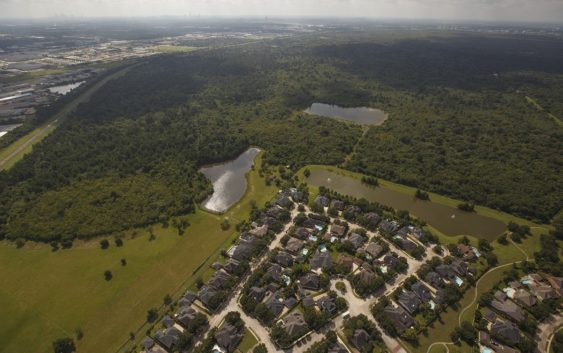- List of hurricane names 2024
- Homeowners insurance doesn't cover floods: How to protect your home in North Carolina
- Before and after: See Dubai flooding from space
- No evidence of a tornado in Rock Hill, investigation determines
- Marking 15 years since 19,000 acre wildfire destroyed dozens of homes in Horry County
In win for Harvey victims, federal judge finds government liable for reservoir flooding

Houston’s natural vulnerability to flooding — worsened by development that officials left unchecked for decades — was exposed like never before in 2017, when Hurricane Harvey slammed into Texas and turned into a tropical storm that lingered for days over America’s fourth-largest city. One of the starkest examples emerged on the west side of town, where thousands of flooded-out Houstonians learned that their homes and businesses were located inside federally owned flood control reservoirs.
The reservoirs behind Addicks and Barker dams are dry most of the time, dotted with parks and sports fields. But during Harvey, they filled to unprecedented levels with floodwater that crept into thousands of homes and businesses behind them, lingering for days. Within weeks, hundreds of impacted property owners had sued the U.S. Army Corps of Engineers — the federal agency that owns and operates the dams — alleging that it is liable for the flooding and must compensate them for the resulting damages.
In a historic decision on Tuesday, U.S. Judge Charles F. Lettow of the U.S. Court of Federal Claims sided with them.
In the 1940s, when the Army Corps built the dams, the area behind them was mostly empty prairieland. But in his 46-page ruling, Lettow said it was clear that the Army Corps knew for decades — since at least the 1970s — that the reservoirs could swell to such levels but chose not to purchase more land around them to curtail development even as it was encroaching from all sides. That means the 2017 flooding was intentional and constituted a “taking” of private property under the Fifth Amendment to the U.S. Constitution, which requires “just compensation” to landowners, Lettow ruled.
In its defense, the government argued that the Army Corps was forced to flood the properties out of necessity and emergency — and that it had no other option because of the way the reservoirs function.
While that might be true, Lettow wrote, “these constraints only existed because the Corps’ design of the dams contemplated flooding beyond government-owned land onto private properties.”
“‘Thus, it was not that the government had to respond to Tropical Storm Harvey as an emergency that necessitated the flooding of private land,’ but rather that the government had made a calculated decision to allow for flooding these lands years before Harvey, when it designed, modified, and maintained the dams in such a way that would flood private properties during severe storms,” he wrote. “Defendant cannot now claim that this harm was unavoidable when it planned for years to impound floodwaters onto plaintiffs’ properties.”
The U.S. Department of Justice didn’t respond to a request for comment. During the suit’s 10-day trial, government lawyers called the legal action the largest Fifth Amendment takings case in U.S. history.
Daniel Charest, one of the lead lawyers for the property owners, said he expects the government to appeal the decision. If liability is upheld by the U.S. Court of Appeals for the Federal Circuit, how much the government owes property owners will be determined in the next phase of the case.
Charest said they will seek a variety of damages, including not only property damage but lost property value, displacement costs and risk of future flooding. He said property damages alone could exceed $1 billion. He encouraged all residents and business owners whose properties are behind Addicks and Barker dams flooded to file claims.
“It’s such an important case for the community, for tens of thousands of people,” he said.
A ruling is still pending in another case brought against the federal government by property owners downstream of Addicks and Barker whose homes and businesses flooded when the Army Corps released historic amounts of water from the dams.